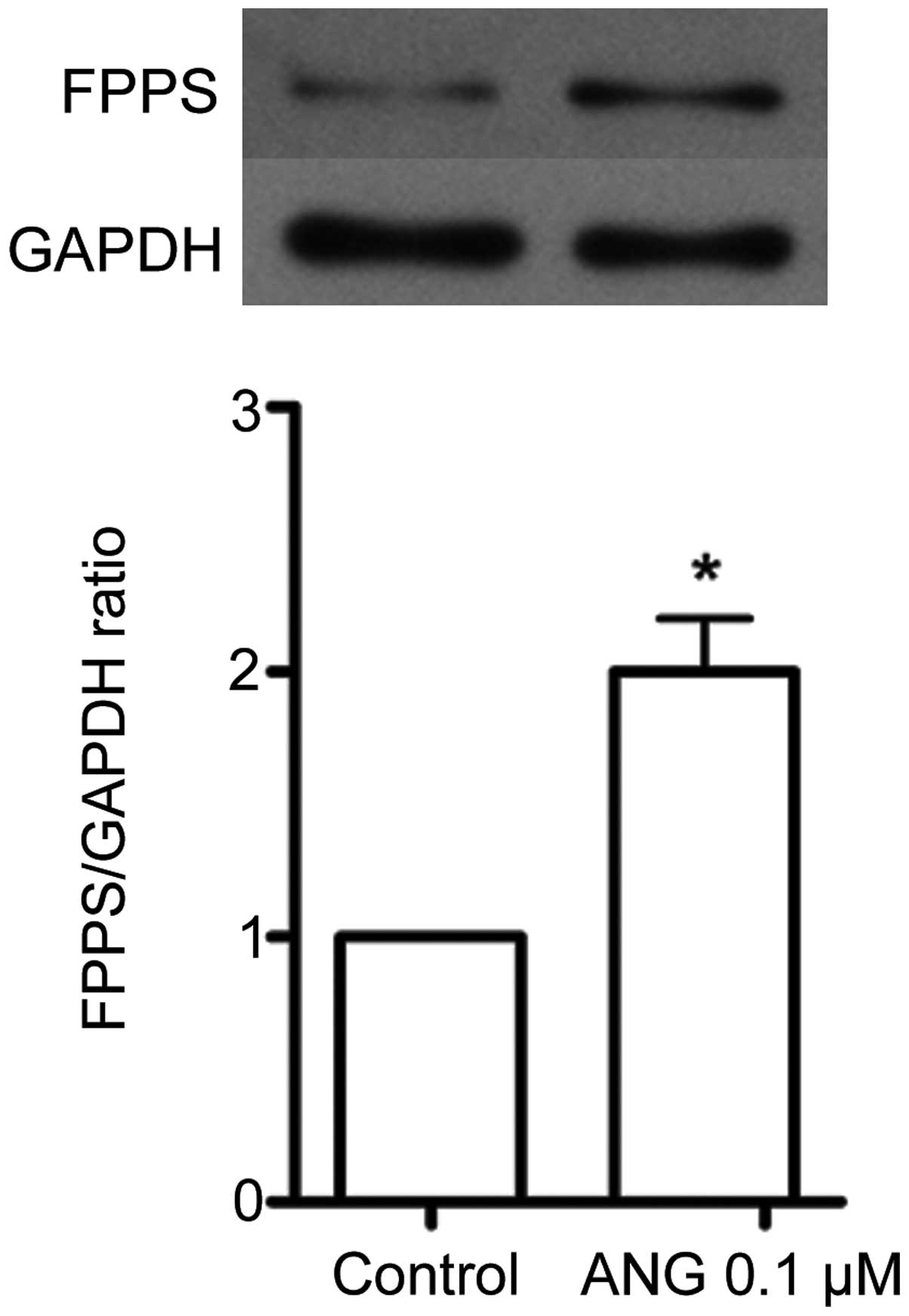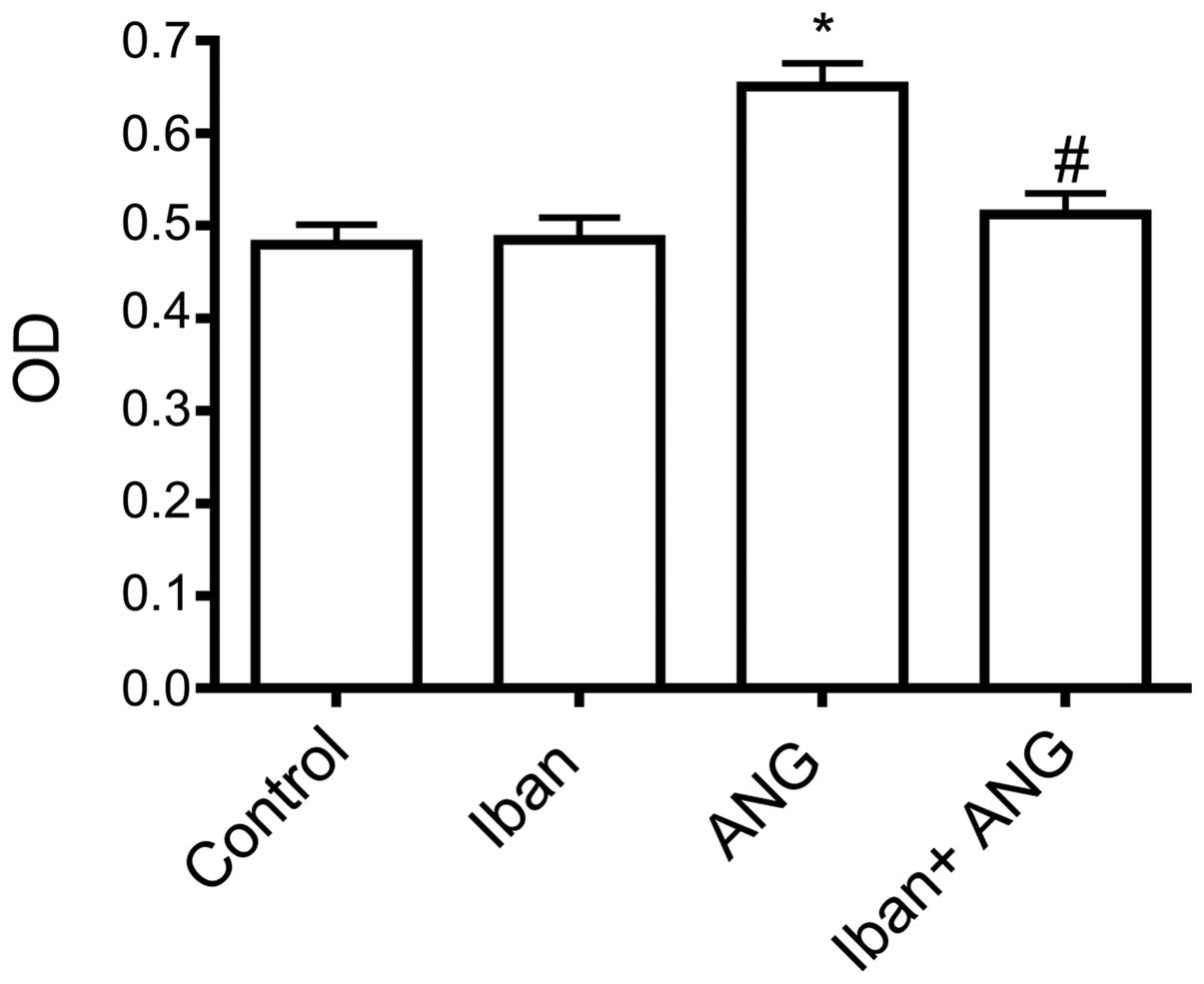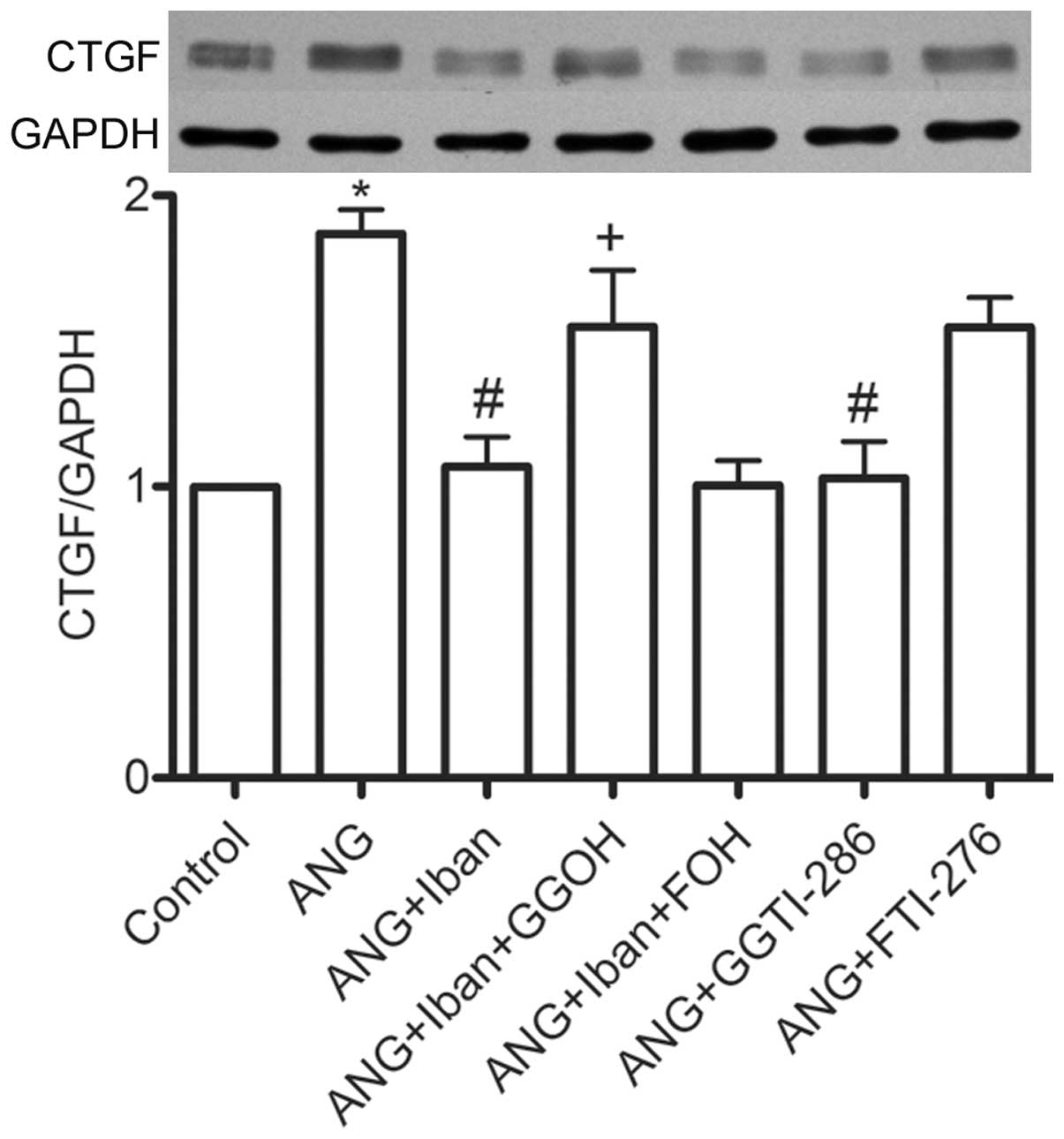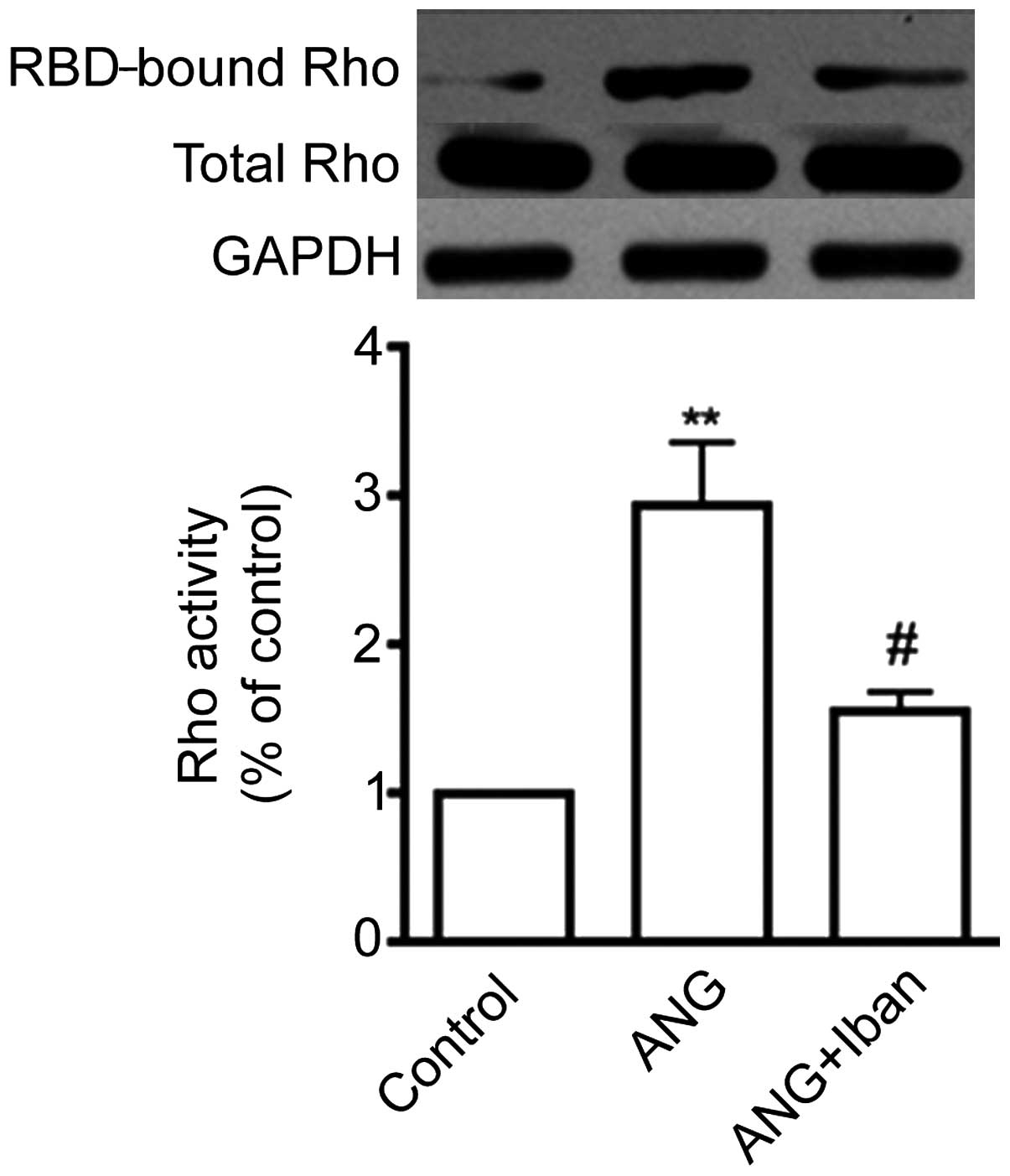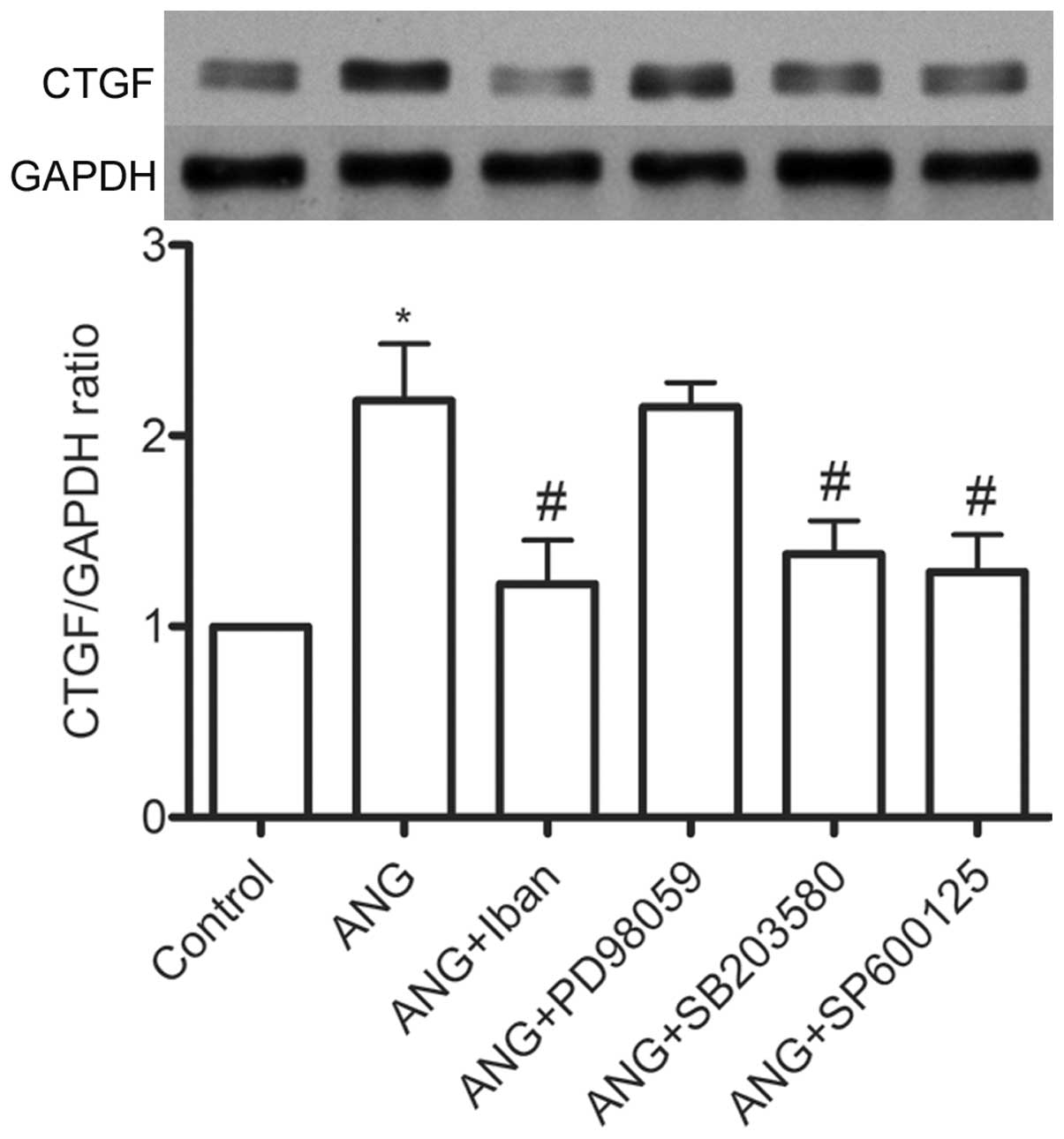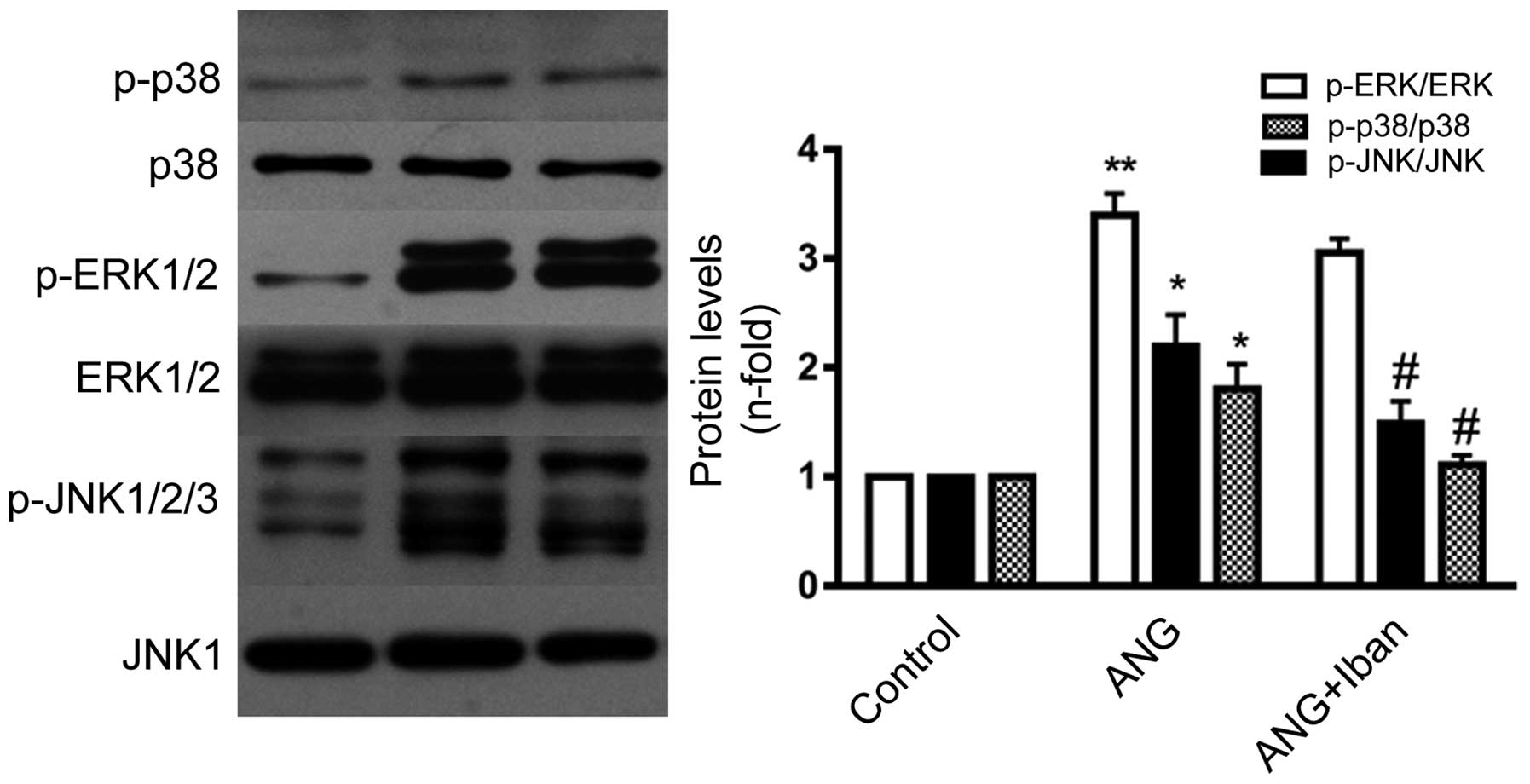|
1
|
Rizzoni D, Muiesan ML, Porteri E, De
Ciuceis C, Boari GE, Salvetti M, Paini A and Rosei EA: Vascular
remodeling, macro-and microvessels: Therapeutic implications. Blood
Press. 18:242–246. 2009. View Article : Google Scholar
|
|
2
|
Inoue T and Node K: Molecular basis of
restenosis and novel issues of drug-eluting stents. Circ J.
73:615–621. 2009. View Article : Google Scholar : PubMed/NCBI
|
|
3
|
Touyz RM and Schiffrin EL: Signal
transduction mechanisms mediating the physiological and
pathophysiological actions of angiotensin II in vascular smooth
muscle cells. Pharmacol Rev. 52:639–672. 2000.PubMed/NCBI
|
|
4
|
Fan WH, Pech M and Karnovsky MJ:
Connective tissue growth factor (CTGF) stimulates vascular smooth
muscle cell growth and migration in vitro. Eur J Cell Biol.
79:915–923. 2000. View Article : Google Scholar
|
|
5
|
Oemar BS, Werner A, Garnier JM, Do DD,
Godoy N, Nauck M, März W, Rupp J, Pech M and Lüscher TF: Human
connective tissue growth factor is expressed in advanced
atherosclerotic lesions. Circulation. 95:831–839. 1997. View Article : Google Scholar : PubMed/NCBI
|
|
6
|
Rupérez M, Lorenzo O, Blanco-Colio LM,
Esteban V, Egido J and Ruiz-Ortega M: Connective tissue growth
factor is a mediator of angiotensin II-induced fibrosis.
Circulation. 108:1499–1505. 2003. View Article : Google Scholar : PubMed/NCBI
|
|
7
|
Rupérez M, Rodrigues-Díez R, Blanco-Colio
LM, Sánchez-López E, Rodríguez-Vita J, Esteban V, Carvajal G, Plaza
JJ, Egido J and Ruiz-Ortega M: HMG-CoA reductase inhibitors
decrease angiotensin II-induced vascular fibrosis: Role of
RhoA/ROCK and MAPK pathways. Hypertension. 50:377–383. 2007.
View Article : Google Scholar : PubMed/NCBI
|
|
8
|
Ohtsu H, Mifune M, Frank GD, Saito S,
Inagami T, Kim-Mitsuyama S, Takuwa Y, Sasaki T, Rothstein JD,
Suzuki H, et al: Signal-crosstalk between Rho/ROCK and c-Jun
NH2-terminal kinase mediates migration of vascular smooth muscle
cells stimulated by angiotensin II. Arterioscler Thromb Vasc Biol.
25:1831–1836. 2005. View Article : Google Scholar : PubMed/NCBI
|
|
9
|
Kobayashi N, Nakano S, Mita S, Kobayashi
T, Honda T, Tsubokou Y and Matsuoka H: Involvement of Rho-kinase
pathway for angiotensin II-induced plasminogen activator
inhibitor-1 gene expression and cardiovascular remodeling in
hypertensive rats. J Pharmacol Exp Ther. 301:459–466. 2002.
View Article : Google Scholar : PubMed/NCBI
|
|
10
|
Roskoski R Jr: Protein prenylation: A
pivotal posttranslational process. Biochem Biophys Res Commun.
303:1–7. 2003. View Article : Google Scholar : PubMed/NCBI
|
|
11
|
Li L, Hu SJ, Dong HT, Kang L, Chen NY and
Fang YQ: Alterations in gene expression of series key enzymes in
mevalonic acid pathway detected by RNA array in spontaneously
hypertensive rats. Chin J Pathophysiol. 24:54–59. 2008.
|
|
12
|
Ye Y, Hu SJ and Li L: Inhibition of
farnesylpyrophosphate synthase prevents angiotensin II-induced
hypertrophic responses in rat neonatal cardiomyocytes: Involvement
of the RhoA/Rho kinase pathway. FEBS Lett. 583:2997–3003. 2009.
View Article : Google Scholar : PubMed/NCBI
|
|
13
|
Ye Y, Mou Y, Bai B, Li L, Chen GP and Hu
SJ: Knockdown of farnesylpyrophosphate synthase prevents
angiotensin II-mediated cardiac hypertrophy. Int J Biochem Cell
Biol. 42:2056–2064. 2010. View Article : Google Scholar : PubMed/NCBI
|
|
14
|
Li L, Chen GP, Yang Y, Ye Y, Yao L and Hu
SJ: Chronic inhibition of farnesyl pyrophosphate synthase
attenuates cardiac hypertrophy and fibrosis in spontaneously
hypertensive rats. Biochem Pharmacol. 79:399–406. 2010. View Article : Google Scholar
|
|
15
|
Yang J, Mou Y, Wu T, Ye Y, Jiang JC, Zhao
CZ, Zhu HH, Du CQ, Zhou L and Hu SJ: Cardiac-specific
overexpression of farnesyl pyrophosphate synthase induces cardiac
hypertrophy and dysfunction in mice. Cardiovasc Res. 97:490–499.
2013. View Article : Google Scholar
|
|
16
|
Du CQ, Yang L, Yang J, Han J, Hu XS, Wu T
and Hu SJ: Inhibition of farnesyl pyrophosphate synthase prevents
norepinephrine-induced fibrotic responses in vascular smooth muscle
cells from spontaneously hypertensive rats. Hypertens Res.
37:26–34. 2014. View Article : Google Scholar
|
|
17
|
Owens JM, Fuller K and Chambers TJ:
Osteoclast activation: Potent inhibition by the bisphosphonate
alendronate through a nonresorptive mechanism. J Cell Physiol.
172:79–86. 1997. View Article : Google Scholar : PubMed/NCBI
|
|
18
|
Papapoulos SE: Ibandronate: A potent new
bisphosphonate in the management of postmenopausal osteoporosis.
Int J Clin Pract. 57:417–422. 2003.PubMed/NCBI
|
|
19
|
van Beek E, Pieterman E, Cohen L, Löwik C
and Papapoulos S: Farnesyl pyrophosphate synthase is the molecular
target of nitrogen-containing bisphosphonates. Biochem Biophys Res
Commun. 264:108–111. 1999. View Article : Google Scholar : PubMed/NCBI
|
|
20
|
Kavanagh KL, Guo K, Dunford JE, Wu X,
Knapp S, Ebetino FH, Rogers MJ, Russell RG and Oppermann U: The
molecular mechanism of nitrogen-containing bisphosphonates as
antiosteoporosis drugs. Proc Natl Acad Sci USA. 103:7829–7834.
2006. View Article : Google Scholar : PubMed/NCBI
|
|
21
|
Lefkovits J and Topol EJ: Pharmacological
approaches for the prevention of restenosis after percutaneous
coronary intervention. Prog Cardiovasc Dis. 40:141–158. 1997.
View Article : Google Scholar : PubMed/NCBI
|
|
22
|
Kiernan TJ, Yan BP, Cruz-Gonzalez I,
Cubeddu RJ, Caldera A, Kiernan GD and Gupta V: Pharmacological and
cellular therapies to prevent restenosis after percutaneous
transluminal angioplasty and stenting. Cardiovasc Hematol Agents
Med Chem. 6:116–124. 2008. View Article : Google Scholar : PubMed/NCBI
|
|
23
|
Ylitalo R, Oksala O, Ylä-Herttuala S and
Ylitalo P: Effects of clodronate (dichloromethylene bisphosphonate)
on the development of experimental atherosclerosis in rabbits. J
Lab Clin Med. 123:769–776. 1994.PubMed/NCBI
|
|
24
|
Danenberg HD, Golomb G, Groothuis A, Gao
J, Epstein H, Swaminathan RV, Seifert P and Edelman ER: Liposomal
alendronate inhibits systemic innate immunity and reduces in-stent
neointimal hyperplasia in rabbits. Circulation. 108:2798–2804.
2003. View Article : Google Scholar : PubMed/NCBI
|
|
25
|
Wu L, Zhu L, Shi WH, Yu B and Cai D:
Zoledronate inhibits intimal hyperplasia in balloon-injured rat
carotid artery. Eur J Vasc Endovasc Surg. 41:288–293. 2011.
View Article : Google Scholar
|
|
26
|
Güzeloğlu M, Gül M, Reel B, Yürekli I,
Aykut K and Hazan E: The effects of zoledronic acid on neointimal
hyperplasia: A rabbit carotid anastomosis model. Anadolu Kardiyol
Derg. 11:93–100. 2011. View Article : Google Scholar
|
|
27
|
Su JZ, Fukuda N, Kishioka H, Hu WY and
Kanmatsuse K: Etidronate influences growth and phenotype of rat
vascular smooth muscle cells. Pharmacol Res. 46:7–13. 2002.
View Article : Google Scholar : PubMed/NCBI
|
|
28
|
Wu L, Zhu L, Shi WH, Zhang J, Ma D and Yu
B: Zoledronate inhibits the proliferation, adhesion and migration
of vascular smooth muscle cells. Eur J Pharmacol. 602:124–131.
2009. View Article : Google Scholar
|
|
29
|
Albadawi H, Haurani MJ, Oklu R, Trubiano
JP, Laub PJ, Yoo HJ and Watkins MT: Differential effect of
zoledronic acid on human vascular smooth muscle cells. J Surg Res.
182:339–346. 2013. View Article : Google Scholar :
|
|
30
|
Van Aelst L and D’Souza-Schorey C: Rho
GTPases and signaling networks. Genes Dev. 11:2295–2322. 1997.
View Article : Google Scholar : PubMed/NCBI
|
|
31
|
Miyata Y and Nishida E: Distantly related
cousins of MAP kinase: Biochemical properties and possible
physiological functions. Biochem Biophys Res Commun. 266:291–295.
1999. View Article : Google Scholar : PubMed/NCBI
|















